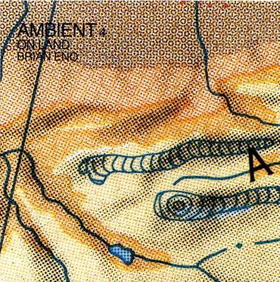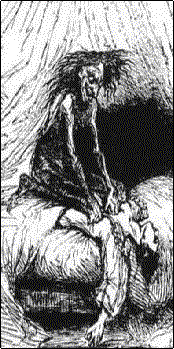Correspondence(s)
Sun. June 17, 2007Categories: Abstract Dynamics
Leeks Hill

Simon is right: the omission of Eno from the Suffolk hauntology post is really quite an oversight, especially odd since Eno, predictably, came up a number of times in conversations at the Bentwaters event last week. I suppose it does prove my point about the inexhaustible richness of Suffolk’s cultural landscape; and there is something apt about leaving out Eno – who theorised and exemplified the role of artist as offstage-enabler – from a post on hauntology. Nevertheless, it was odd that I forgot him, especially as I had planned to speculate on the relationship between the title ‘On Land’ and Suffolk’s crumbling coastline. Odder still, is that, until yesterday, I had not visited the ‘little wood … which stands between Woodbridge and Melton’ that On Land‘s ‘Unfamilar Wind (Leeks Hill)’ invokes, even though the wood stands not half a mile from where I’m sitting now. Leeks Hill turns out to be rather larger than Eno’s description had led me to expect – as I walked through the wood, I played the five minute track four times on my iPod, and didn’t by any means walk all the way around it. Listening to ‘Unfamiliar Wind (Leeks Hill)’ in the space it was designed to evoke was every bit as uncanny as you’d expect; the wood was drying in the late afternoon sun after heavy showers earlier in the day, and it was difficult to definitively determine which of the wildlife calls and coos I was hearing belonged to the track and which to the damply bright woodland environment. (Interesting that Simon should mention ‘false memory’ and Boards of Canada, since Adam Parkinson, an MA student at Newcastle, recently sent me a very interesting essay on BoC and hauntology which refers to Freud’s claim, in his essay on ‘Screen Memory’, that we may not have any memories from childhood at all.)
Context isn’t everything. In response to the Woodbridge boats post, reader Andrew Parker writes:
- A sailor sees a boat.
A pyromaniac sees fuel.
A termite sees food.
Once the sailor values warmth more than sailing he sees fuel for a fire and the termite sees the error of his ways.
Context is everything.
But the fascination of Graham’s philosophy of objects is that it based on a rejection of this move. Every interaction between objects presupposes a mutual ‘caricaturing’ – when fire burns cotton, or when a termite eats a rotting boat, each only ‘perceive’ certain features of the other, ignoring the rest, so that ‘some sort of objectification occurs even at the level of sheer matter’. Graham’s point, though, is that there is a subterranean remainder in every object that never enters into relations of any kind. ‘If we could total up all the “contexts, roles and social goals” in which a specific bridge or flagpole [or decomposing boat] are currently embedded, this would not give us the being of these objects.’

The old hag. Reza writes:
- Another object helpful in exemplifying the enigma of decay (besides Woodbridge’s boats) is the myth of the Old Hag in eastern and western Europe and Asia. Hag is a monster that does not die and does not begin to seem older while it maintains its monstrosity by indefinitely perpetuating its aging process and infinitely getting older. It could constitute a good example for Leibniz when he was explaining his infinitesimal calculus.
Suffolk, centre of pestilence. English Heretic writes:
- There are some articles on the english heretic web site on Orford Ness (visitors guides and a video banishing rite! at Orford Ness). There’s also a piece on the very hauntological hallucination of Ronald Ashford at Shingle Street. There’s also quite a bit on Rendlesham (particularly related to the occultist Kenneth Grant, who considers Suffolk a “centre of pestilence”!). Along with my friend Phil Legard we did some recording close to the suspected site of the landings, which surfaced on the English Heretic annual as a track called Open the Mithraic Stargate. Finally the first couple of releases focused on the filming of Witchfinder General.
At the moment I am working on a release called Visitors Guides, which has got a piece assembled from recordings on location at Orford Ness, last August, as well as a superimposition of Crowley’s Amalantrah working over Butley (near Rendlesham)… re-imagined as Pantruel.
… one of the ideas behind the [EH] project was to create these Ballardian type “kits” only in concrete form… maybe a film or a mock guide or fabricated found recording etc. The Dr. Champagne, Robert Navane characters who feature in EH releases are homages to Dr. Nathan and Travis in Atrocity Exhibition. Robert Navane is kind of Champagne’s unfortunate experimental guinea pig.
Weird etymology. ‘Strangely enough the word weird has come into modern English entirely from its use in Macbeth.’